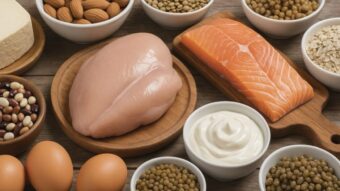Why Vitamin B1 Is Essential – And Why Its Deficiency Is Often Overlooked

Vitamin B1, also known as thiamine, is a water-soluble B vitamin and a vital catalyst in the human body’s energy metabolism. It enables the conversion of carbohydrates into usable cellular energy (ATP), supports nerve signal transmission, protects the heart from overload, and enhances mental performance. Unlike fat-soluble vitamins, thiamine cannot be stored in the body and must be replenished daily through food. A deficiency can cause symptoms within just a few weeks of poor nutrition. G.Business reports, citing current data from clinical practice and nutritional medicine.
What Is Thiamine and Why Does the Body Need It
Vitamin B1 is active in the body as thiamine pyrophosphate (TPP), a coenzyme involved in the oxidative decarboxylation of pyruvate and alpha-ketoglutarate, essential for glucose metabolism. Without it, the brain and muscles cannot produce sufficient energy. A deficiency impacts not just isolated systems, but the entire body—particularly the nervous system, cardiovascular system, and brain.
Causes of Vitamin B1 Deficiency: More Than Just a Poor Diet
A thiamine deficiency can result not only from inadequate intake but also from complex medical or physiological factors. Key causes include:
1. Insufficient Dietary Intake
- Highly processed foods like white flour, polished rice, and sugary snacks are nearly devoid of vitamin B1.
- One-sided diets, extreme low-carb trends, and vegan diets without supplementation lead to rapid deficiency.
- Elderly individuals often consume liquid or soft foods with low nutritional density.
2. Increased Demand or Loss
- Pregnancy and breastfeeding raise metabolic needs.
- Conditions such as cancer, infections, hyperthyroidism, and diabetes increase cellular thiamine usage.
- Stress and athletic training can double the daily requirement.
3. Impaired Absorption or Accelerated Elimination
- Chronic alcohol use blocks absorption in the intestines and increases loss through urine.
- Diseases like celiac disease, IBS, pancreatitis, and short bowel syndrome reduce intestinal uptake.
- Certain diuretics and chemotherapy agents promote faster excretion.
Who Is Most at Risk of Vitamin B1 Deficiency
| Risk Group | Reason |
|---|---|
| People over 60 | Reduced nutrient absorption and lower intake |
| Alcohol-dependent individuals | Impaired absorption and increased loss |
| Vegans without supplements | Lack of animal-based B1 sources |
| Post-gastrointestinal surgery patients | Stomach or bowel resections limit absorption |
| Diabetics | Increased glucose turnover raises demand |
| Athletes on restricted diets | High energy use, low B1 intake |
Symptoms of Thiamine Deficiency – From Fatigue to Life-Threatening Conditions
Vitamin B1 deficiency presents with a range of nonspecific symptoms often misdiagnosed. Early signs include:
Early Symptoms
- Fatigue, muscle weakness
- Irritability, poor concentration, depression
- Loss of appetite, weight loss
- Palpitations, low blood pressure
Advanced Deficiency Syndromes
| Syndrome | Description |
|---|---|
| Dry Beriberi | Nerve damage, numbness, burning feet, balance issues |
| Wet Beriberi | Heart failure, swelling, shortness of breath |
| Wernicke’s Encephalopathy | Eye muscle paralysis, ataxia, confusion – a medical emergency |
| Korsakoff Syndrome | Chronic memory loss, often irreversible |
| Peripheral Neuropathy | Tingling, numbness, loss of coordination and muscle strength |
How Is a Vitamin B1 Deficiency Diagnosed
Diagnosis requires a combination of clinical observation and lab testing:
- Medical history (diet, alcohol use, medications)
- Blood tests:
- Thiamine levels in plasma or whole blood
- Transketolase activity (enzyme function test)
- Thiamine pyrophosphate concentration
- Additional testing:
- MRI (if neurological symptoms are present)
- ECG for cardiovascular abnormalities
How to Treat Vitamin B1 Deficiency
Mild Deficiency:
- Daily oral supplements with 10–50 mg of thiamine
- Combine with other B vitamins for synergistic effects
- Address dietary deficiencies
Severe Deficiency:
- Intramuscular or intravenous administration of 100–300 mg/day
- Immediate treatment is crucial in cases like Wernicke’s encephalopathy
- Follow-up with oral maintenance doses and medical monitoring
Foods Rich in Vitamin B1
A healthy, balanced diet is the most effective prevention. Key sources include:
| Food | Thiamine per 100 g |
|---|---|
| Pork | 0.8 mg |
| Sunflower or pine nuts | 0.6–1.0 mg |
| Lentils, chickpeas, beans | 0.3–0.5 mg |
| Oats, whole grain bread | 0.4 mg |
| Brown rice, millet, quinoa | 0.2–0.3 mg |
| Eggs | 0.07 mg |
| Liver (beef, veal) | 0.3–0.5 mg |
Recommended Daily Intake:
- Adults: 1.1–1.5 mg
- Pregnant or breastfeeding women: up to 1.9 mg
- Athletes, ill or stressed individuals: up to 3–4 mg
How to Prevent Vitamin B1 Deficiency
- Eat whole grains and legumes daily
- Include meat or fortified plant alternatives
- Limit alcohol consumption
- Use supplements if at risk (elderly, pregnant, vegan, chronically ill)
- Get blood levels checked regularly, especially if symptoms persist or worsen
Small Vitamin, Big Consequences
Vitamin B1 is often underestimated, yet plays a foundational role in your physical and mental health. Whether you're young, old, active, or chronically ill—B1 deficiency can develop quietly and lead to severe outcomes if ignored. Pay attention to subtle signs like fatigue, memory problems, or mood swings. Maintaining a varied diet, limiting processed foods, and supplementing when necessary can protect your heart, brain, and nerves long term.
Stay connected for news that works — timely, factual, and free from opinion — and insights that matter now: How to Use Your Contrast Shower for Health, Immunity and Mental Strength
